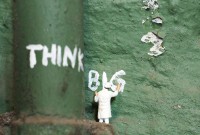- Home
- Business Processes
- Industry Knowledge
- Aerospace Industry
- Automotive Industry
- Banking Domain
- BFSI Industry
- Consumer/ FMCG Industry
- Chemicals Industry
- Engineering & Construction
- Energy Industry
- Education Domain
- Finance Domain
- Hospitality Domain
- Healthcare Industry
- Insurance Domain
- Retail Industry
- Travel and Tourism Domain
- Telecom Industry
- Leadership Skills
- eLearning
- Home
- Leadership Skills
- Leadership Theories
- Kolb Learning Cycle & Change
Kolb Learning Cycle & Change
David Kolb produced this popular model for learning in 1984. The model suggests four stages of learning which most learners go through in order to learn effectively. Leaming is itself a process of change. Something is added to our perception and prepared us for the next impression, which will change our understanding yet more, however minutely. The Kolb contribution is a significant one because it practically equates change and learning.
Kolb’s Model of Experiential Learning
David Kolb's from Western Reserve University in Cleveland, Ohio gave the model of "experiential learning" which states that humans learn continually, and, in the process, build particular strengths. He says that learning is all about having experiences and then reflects upon the experience that we have just had. We draw out some concepts and some principles from this reflection and test out the new concepts in new situations so that they become part of the ongoing experience. He described it in terms of four learning styles: Accommodating, Converging, Diverging, and Assimilating.
Kolb’s Living Experience
Kold is also a supporter of the theme of human becoming and what they become. He uses the word 'learning', and all these ideas come together and form a framework within which we can think about change and even learn to love it and welcome it. Laming is itself a process of change. Something is added to our perception and prepared us for the next impression, which will change our understanding yet more, however minutely.
What David Kolb is talking about is the normal scientific approach, where observations made are the normal scientific approach, where observations are made and reflected upon to yield theories from which hypotheses are derived and tested out in action, creating new events and experiences.
The first stage is concrete learning or concrete experience, where the learner encounters a new experience or reinterprets an existing experience. This could be where the learner is exposed to a new task or a new way of carrying out a project. This is followed by reflective observation, where the learner reflects on the experience on a personal basis. Following reflective observation is abstract conceptualization, where learners form new ideas or modify current abstract ideas, based on the reflections that arise from the reflective observation stage. The last stage is where the learner applies the new ideas to her surroundings to see if there are any modifications in the next appearance of the experience. By actively experimenting learns to associate what we have experienced with new ideas and innovations.
Change is learning
When you learn, you change. When you change, you learn. The Kolb contribution is a significant one because it practically equates change and learning. A book on change is therefore also a book about learning. Reginald Revans (1907–2003), a UK scientist and educational innovator who gave the “Action Laming framework” made a distinction with two little symbols L>C and C>L. If learning is represented by L and change represented by C then the first symbol means you are ahead in the game you are learning faster than things change. The second can spell disaster because things are changing faster than you are learning so that you are behind in the race. His contribution to our understanding of change management processes gives a central place to learning, both personal and institutional. Revans’ approach emphasizes the practical and moral significance of personal involvement in action and learning, as a means of resolving the intractable social and organizational problems that we find around us.
Revans is in harmony with Kolb in that his contribution of Action Learning is based on the concept that people learn more from reflection, discussion, and working together on real-life issues than from being lectured at. They learn from each other and the learning is relevant, and even when the classroom is being used for input, it is important to provide plenty of scope for learning in this way.
For a change initiative to succeed, project managers must effectively support those affected by the change during the project. Those grappling with the effects of change might need the training to tackle it effectively and we can use this framework to train people with different learning styles; to plan change communications; and to deal with team members who lack motivation; and more.
These perceptions of what is to be human can help us to take a positive approach to change and make it work to our advantage and to that of our enterprise. You are only really alive when you are changing. It is the essence of personal growth, it is the basis of relationships with other people, and without it, there is no learning and no progress.
Related Links
You May Also Like
-
Tips for Effective Time Management
After studying and analyzing how time is spent, why time is wasted, and where time is wasted you need to decide about the changes required for effective utilization of time. For this purpose, a large number of remedial measures can be taken by you. The first and foremost determinant of a planned and purposeful utilization of time is to develop consciousness of the value of time at all levels of the organization. Planning, goal setting, and defining priorities are concerns to addressed immediately.
-
We define Lean as the systematic elimination of waste through a continual effort to decrease inefficiency; the lean leader strives to create a more efficient organization. Lean leadership is a philosophy. It is a consistent way of thinking and being in your role as a leader. The focus of this approach is on raising new leaders and help their team embrace a culture of continuous improvement. Learn what we mean by lean leadership style and its principles.
-
Communication has as its central objective the transmission of meaning. The process of communication is successful only when the receiver understands an idea as the sender intended it. How does a message or an idea travel from one person to another? To transmit our message, we engage in a sensitive and complex process of communication, with different elements like sender, message, channels, receiver, noise, and feedback.
-
Benefits of Teams in Workplace
The use of formal work teams is commonplace in modern organizations. But why we have teams? What are the benefits or advantages that teams provide for organizations and employees? Do we really need to adopt formal team structures and use team-building approaches in organizations? Read this article to explore and learn the benefits of having formal teams in organizations.
-
Team Development by Building Trust
As your team begins to work together, you need to establish a way each team member can exchange ideas and build mutual trust. Successful groups are built on trust and collaboration. A free exchange of ideas, in an open environment, will allow your team to get to know each other and enable you to check on how they work together. Learn some tips to help build team trust and establish personal bonds.
-
Many different types of teams have been identified by social scientists. Managers may encounter the diverse types of challenges while managing different kinds of teams. Challenges associated with Cross-Functional Teams might be different from that of a Geographically Dispersed Team or a Virtual Team. This article explores some common categories and subtypes of teams.
-
Listening is the foundation for good communication. It is also the hardest skill to master. Do you listen to confirm what you already know, or do you listen to explore and learn new things? How can we create receptive communication as a listener? The real art of listening involves awareness and sensitivity to the feelings of the speaker because it is at the feeling level that genuine connection, relationship, and healing occurs.
-
Productivity is defined not in terms of the number of goods produced, but in terms of value-added per employee. Customers don’t really buy goods and services but in fact, they buy a value - something they value. The future is all about tangible products fulfilling intangible needs. Ideas like this can transform a business and provide them a competitive advantage to thrive in the future.
-
Understanding Corporate Strategy
Management outlook and procedures have been revolutionized by more and more innovations over the recent years. It is no longer possible to follow traditional approaches to develop your organization's direction, its management as well its effectiveness. Senior managers need to be good decision-makers. In this section, we introduce concepts for strategy, strategic planning, strategic leadership, their exact meaning and associated terms, and how to use them.
-
David Kolb produced this popular model for learning in 1984. The model suggests four stages of learning which most learners go through in order to learn effectively. Leaming is itself a process of change. Something is added to our perception and prepared us for the next impression, which will change our understanding yet more, however minutely. The Kolb contribution is a significant one because it practically equates change and learning.
Explore Our Free Training Articles or
Sign Up to Start With Our eLearning Courses

About Us
Learning
© 2023 TechnoFunc, All Rights Reserved










